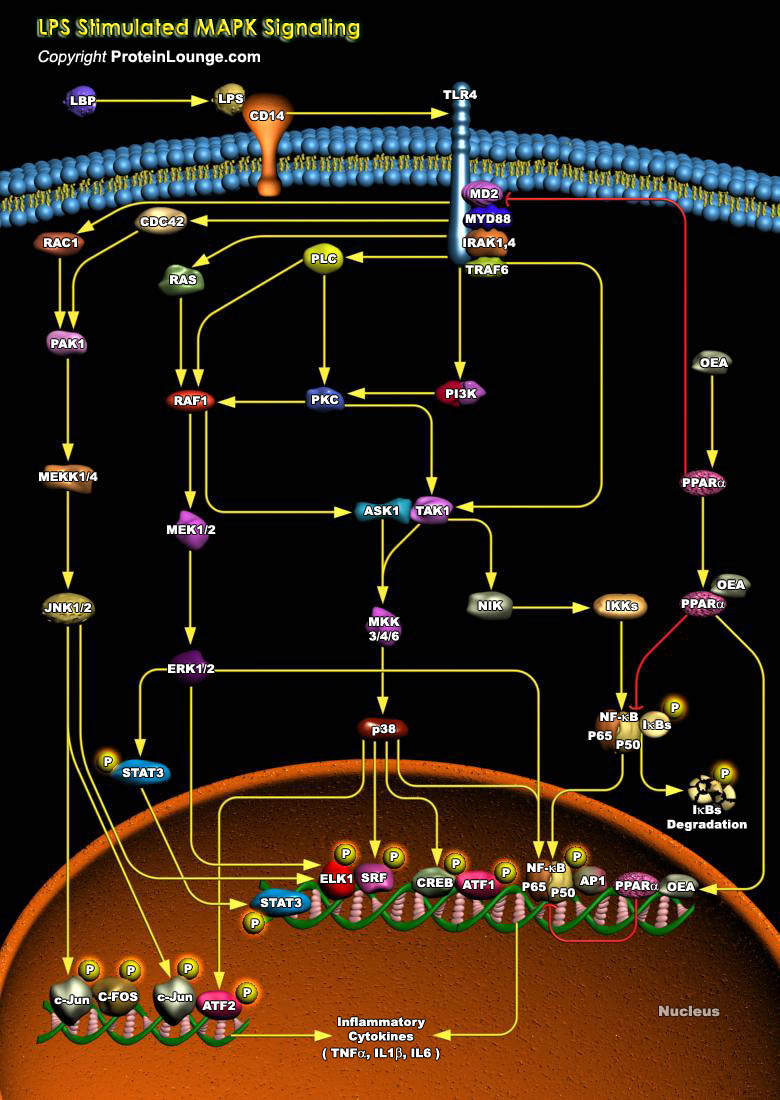
Endotoxin LPS (Lipopolysaccharide) is a component of the outer membrane of Gram-negative bacteria that potently promotes the activation of macrophages and microglia cells, which are important sensors of infection by bacteria, fungi, and viruses, in both the periphery and the CNS (Central Nervous System). There are several known LBP (LPS-Binding Proteins) present on macrophage membranes, including CD14, CD11b/18, and TLR (Toll-like Receptors). TLRs are mammalian homologs of the Drosophila Toll receptor and are involved in initiating innate immune defense against bacteria and fungi. CD14 lacks a transmembrane domain and is unable to initiate signals on its own. Thus, the TLR4 has emerged as a potential signaling partner for LPS/CD14 interactions(Ref.1).The key downstream[..]
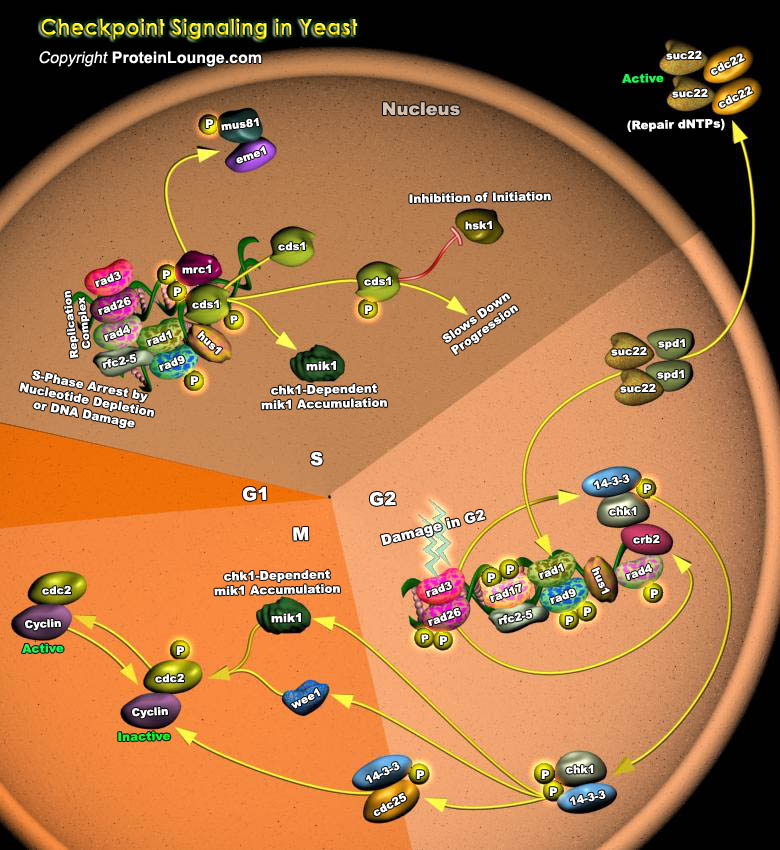
The maintenance of genomic integrity is important for the survival of eukaryotic cells. Checkpoint mechanisms prevent cell cycle transitions until previous events have been completed or damaged DNA has been repaired. Various forms of DNA damage and various treatments that block replication trigger these checkpoints. Checkpoint pathways and proteins are evolutionarily conserved from yeast to man, underlining their importance in maintaining genomic integrity. In the fission yeast, S. pombe (Schizosaccharomyces pombe), several checkpoint pathways monitor the status of the DNA and arrest the cell cycle in response to DNA damage or inhibition of DNA replication induced by Ionizing Radiation and UV light. The checkpoint Rad proteins, rad1, rad3, rad4, rad9, rad17, rad26and[..]
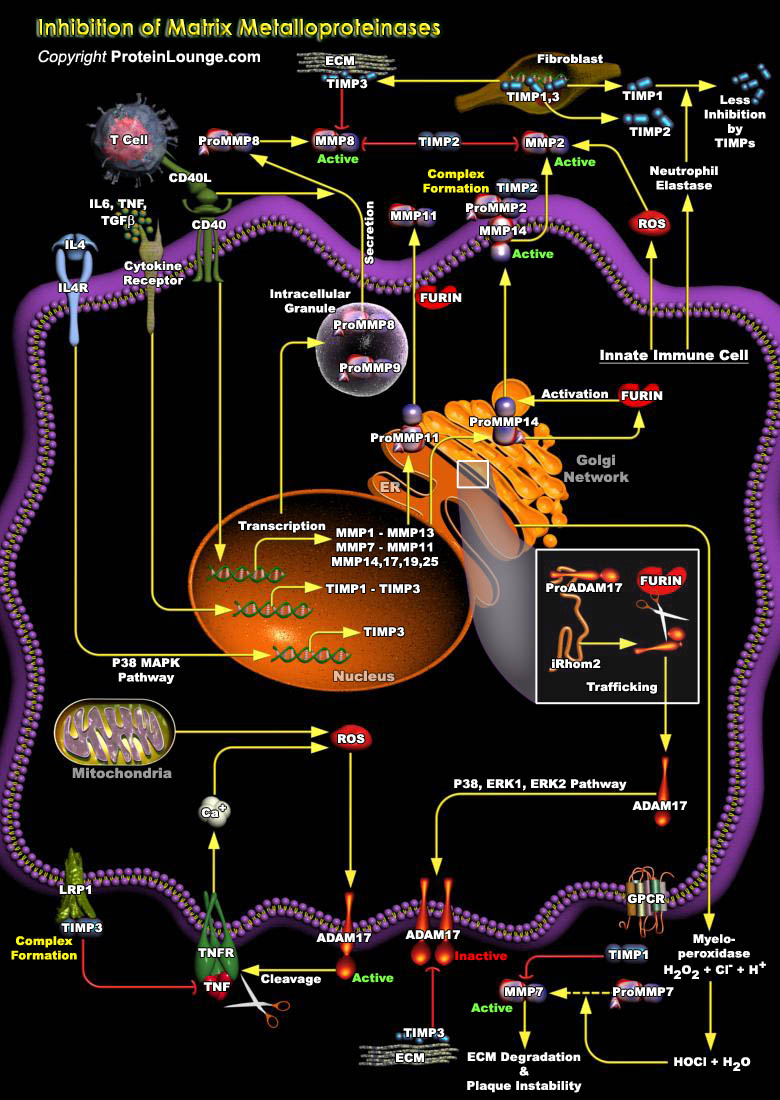
MPs (Metalloproteinases) play a key role in the responses of cells to their microenvironment. By effecting proteolytic degradation or activation of cell surface and ECM (Extracellular Matrix) proteins they can modulate both cell-cell and cell-ECM interactions, which influence cell differentiation, migration, proliferation and survival. Both secreted and membrane bound forms of metalloproteinases have been implicated in pericellular proteolysis, including the MMPs (Matrix Metalloproteinases), the adamalysin-like proteinases with both metalloproteinase and disintegrin-like domains (ADAMs and their counterparts that have a thrombospondin-1-like domain, ADAM-TSs) and the Astacins (Ref.1). MMPs are endopeptidases belonging to the metzincin super family, which depend on the[..]
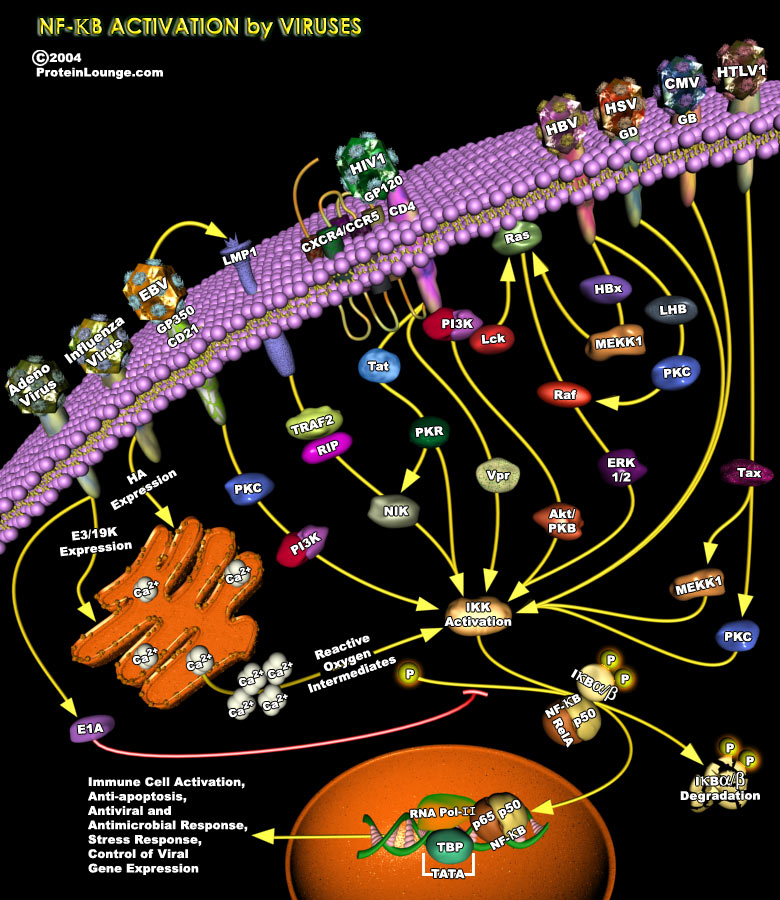
The transcription factor nuclear factor-kappa B (NF-kappaB) plays a fundamental role in the innate antiviral response, acting as a hub network in signal transduction that connects cellular sensors of viral invasion with effector mechanisms of antiviral defence (Ref.1). NF-kappaB pathway appears to be an attractive target for common human viral pathogens. Many viruses, including several human pathogens such as HIV1, the human T-cell leukemia virus HTLV1, Influenza virus, hepatitis B and C viruses, Adenovirus, Kaposi’s sarcoma-associated herpesvirus (KSHV), Epstein-Barr virus (EBV), CMV as well as herpes viruses have evolved different strategies to modulate the NF-kappaB pathway, most of which converge on IKK activation (Ref.2).Human immunodeficiency virus-1 (HIV1)[..]
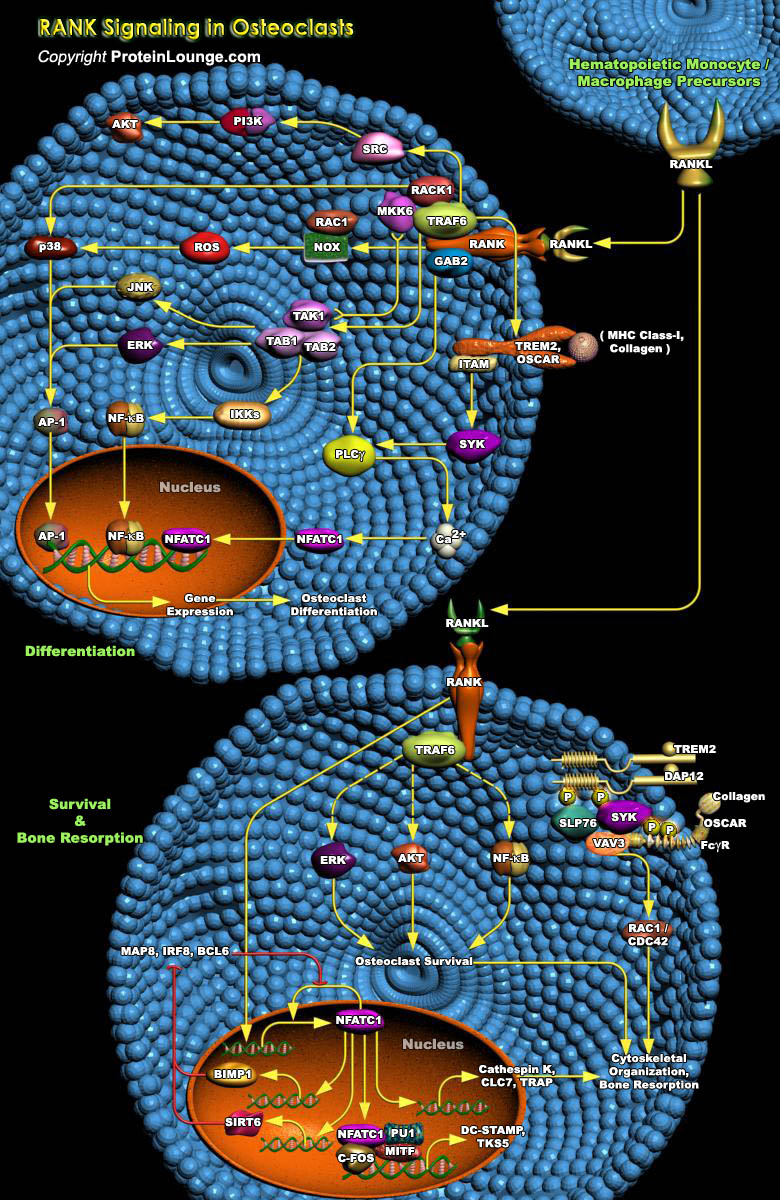
TNF (Tumor Necrosis Factor) and TNFR (Tumor Necrosis Factor Receptor) family proteins play important roles in the control of cell death, proliferation, autoimmunity, the function of immune cells, or the organogenesis of lymphoid organs. Recently, novel members of this large family have been identified that have critical functions in immunity and that couple lymphoid cells with other organ systems such as bone remodeling and mammary gland formation in pregnancy. Bone remodeling results from the coordinate action of osteoclasts and osteoblasts, where osteoclasts cause bone resorption and osteoblasts causes formation of new bone. Regulation of bone remodeling occurs through multiple mechanisms that ultimately converge on the interaction of osteoclasts or their precursors[..]
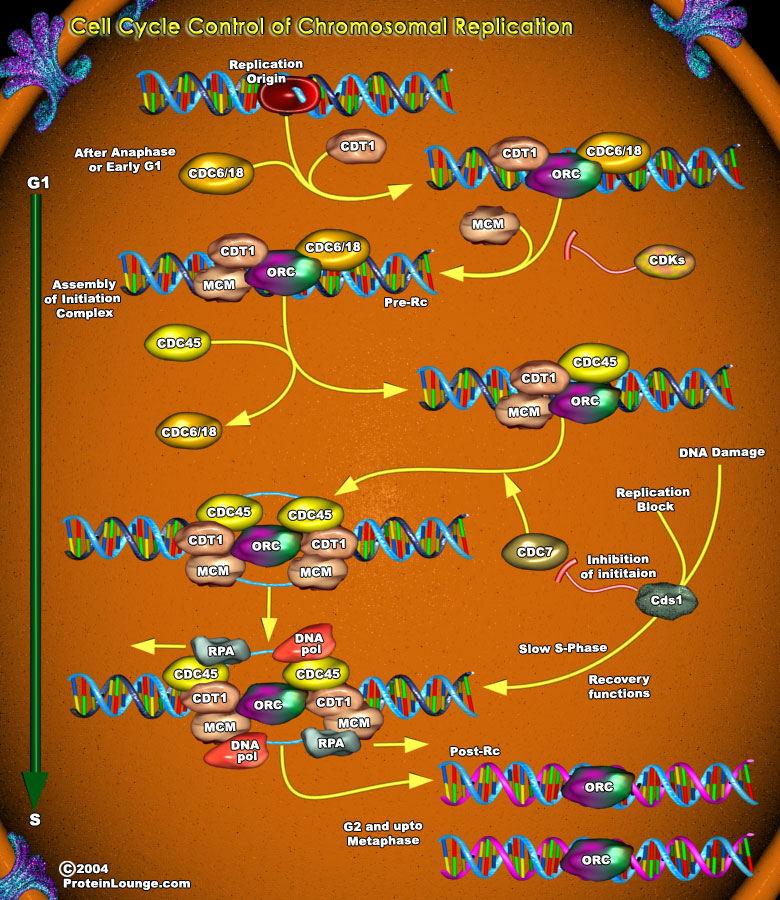
The stable propagation of genetic information requires that the entire genome of an organism be faithfully replicated only once in each cell cycle. In eukaryotes, this replication is initiated at hundreds to thousands of replication origins distributed over the genome, each of which must be prohibited from re-initiating DNA replication within every cell cycle (Ref.1). Initiation of DNA replication occurs by a two-step process. In the first step initiation proteins are assembled onto the replication origin in a step-wise fashion to yield an initiation complex. In the second step the initiation complex is activated by protein kinases, resulting in the establishment of replication forks. This process is tightly regulated such that initiation at a given replication origin[..]
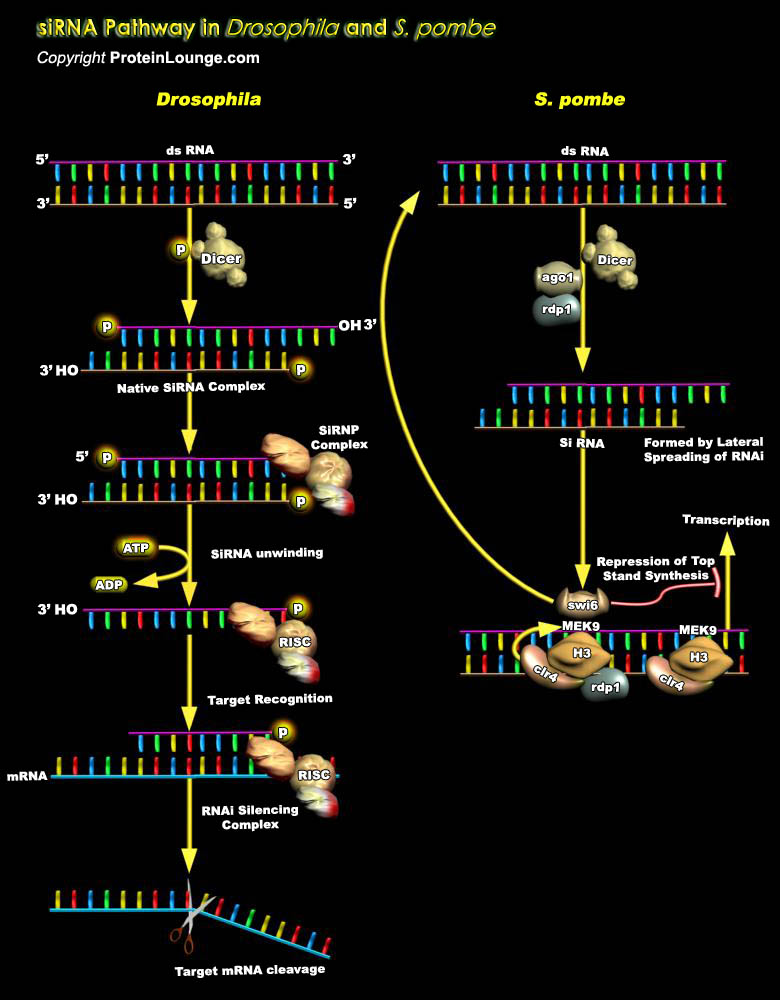
siRNAs (Small interfering RNAs) have gained much attention for their powerful ability to suppress gene expression. Introduction of dsRNA (double-stranded RNA), that are homologous in sequence to a gene, has proven to suppress that gene’s expression through a process known as RNAi (RNA interference). The basic mechanism behind RNAi is the breaking of a dsRNA matching a specific gene sequence into siRNA. These siRNAs are 21–23nt dsRNA duplexes with symmetric 2–3nt 3' overhangs and 5'-phosphate and 3'-hydroxyl groups, which trigger the degradation of mRNA that match its sequence (Ref.1). Interference of gene expression by siRNA is now recognized as a naturally occurring biological strategy for silencing alleles during development in plants,[..]
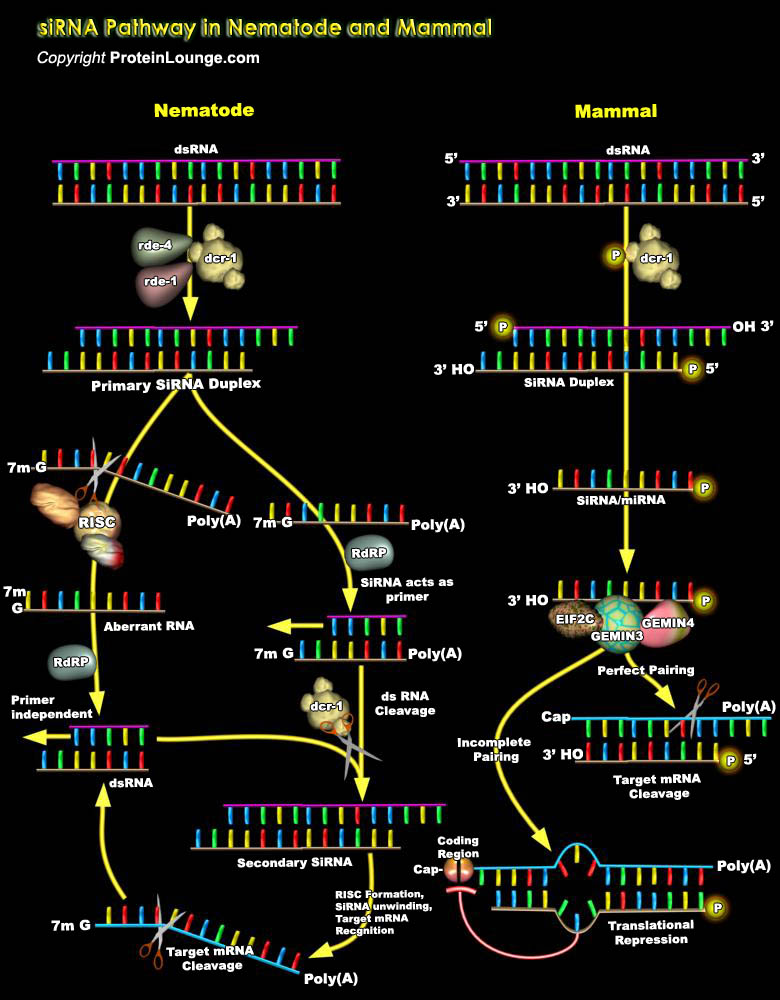
Introduction of dsRNA (double-stranded RNA), that are homologous in sequence to a gene, has proven to suppress that gene’s expression through a process known as RNAi (RNA interference). The mechanism of RNAi involves the breaking of a dsRNA matching a specific gene sequence into siRNA (Small interfering RNAs). These siRNAs are 21–23nt dsRNA duplexes with symmetric 2–3nt 3' overhangs and 5'-phosphate and 3'-hydroxyl groups trigger the degradation of mRNA that match its sequence (Ref.1). Interference of gene expression by siRNA is now recognized as a naturally occurring biological strategy for silencing alleles during development in plants, invertebrates, and vertebrates. siRNAs appears to suppress gene expression without producing a[..]
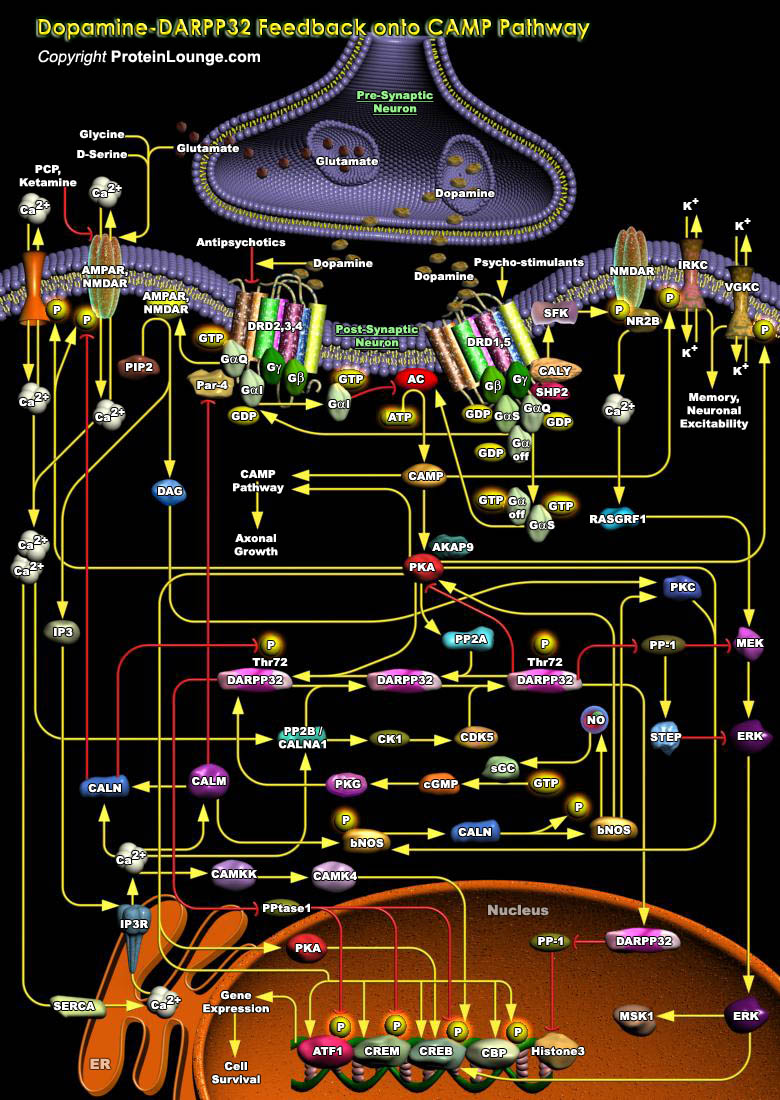
One of the ultimate frontiers for mankind is the elucidation of the function of the mind. Dopaminergic and Glutamergic are two primary neurotransmitter systems in the brain, which are crucially important for the control of the body musculature and the Dopamine-induced signaling pathways. Dopamine, a derivative of the amino acid Tyrosine, is a monoamine neurotransmitter that serves as a chemical messenger in the nervous system. It is the predominant Catecholamine neurotransmitter in the mammalian brain, where it controls functions such as locomotor activity, cognition, emotion, positive reinforcement, food intake, and endocrine regulation. Neurons in the midbrain release Dopamine, which modulates cAMP (Cyclic Adenosine 3',5'-Monophosphate) production by[..]
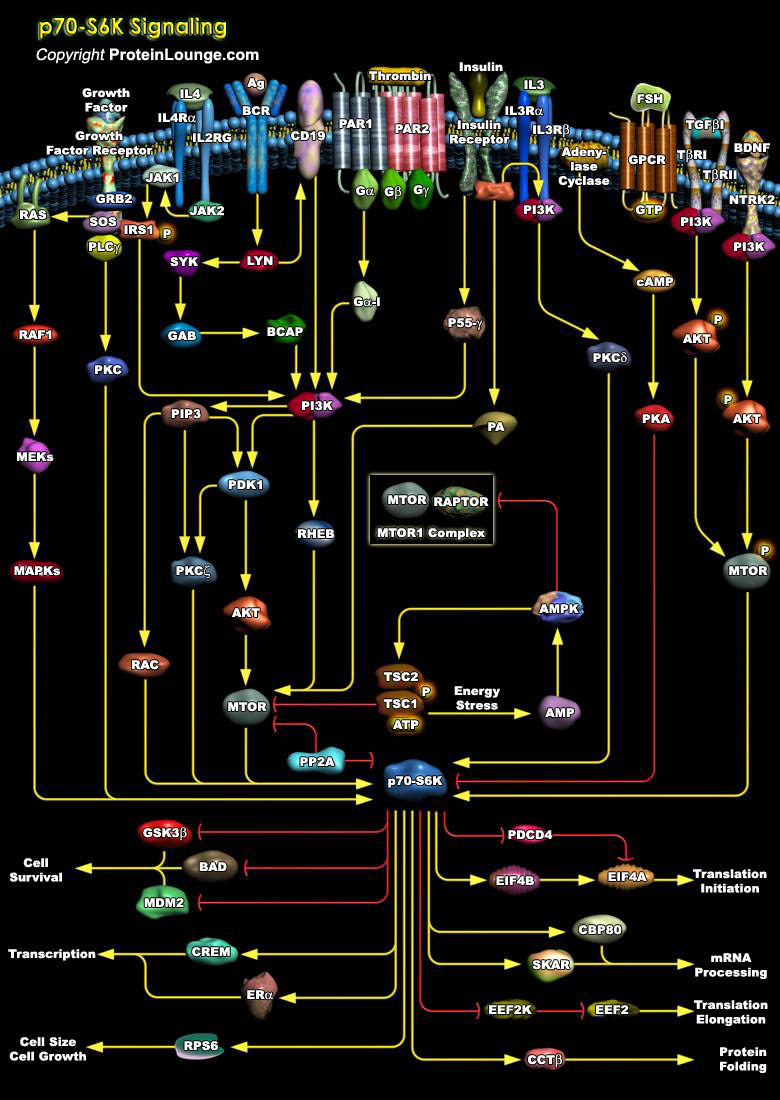
p70S6K is a protein Ser-Thr kinase that phosphorylates the ribosomal S6 subunit, a component of the 40S subunit of eukaryotic ribosomes. It plays a role in protein synthesis and in cell growth control during G1 phase in vivo to enhance translation of certain mRNA species (Ref.1). In the living cell, ribosomal p70S6K is activated through a complex network of signaling molecules. Multiple phosphorylation events within the catalytic, auto inhibitory and hydrophobic motif domains contribute to the regulation of p70S6K (Ref.2). The mTOR (Mammalian Target of Rapamycin) protein Ser-Thr kinase phosphorylates p70S6K at –Thr-412 in the hydrophobic motif. mTOR is one of the downstream targets of AKT and is a key factor in the AKT/mTOR pathway. AKT a serine/threonine kinase[..]
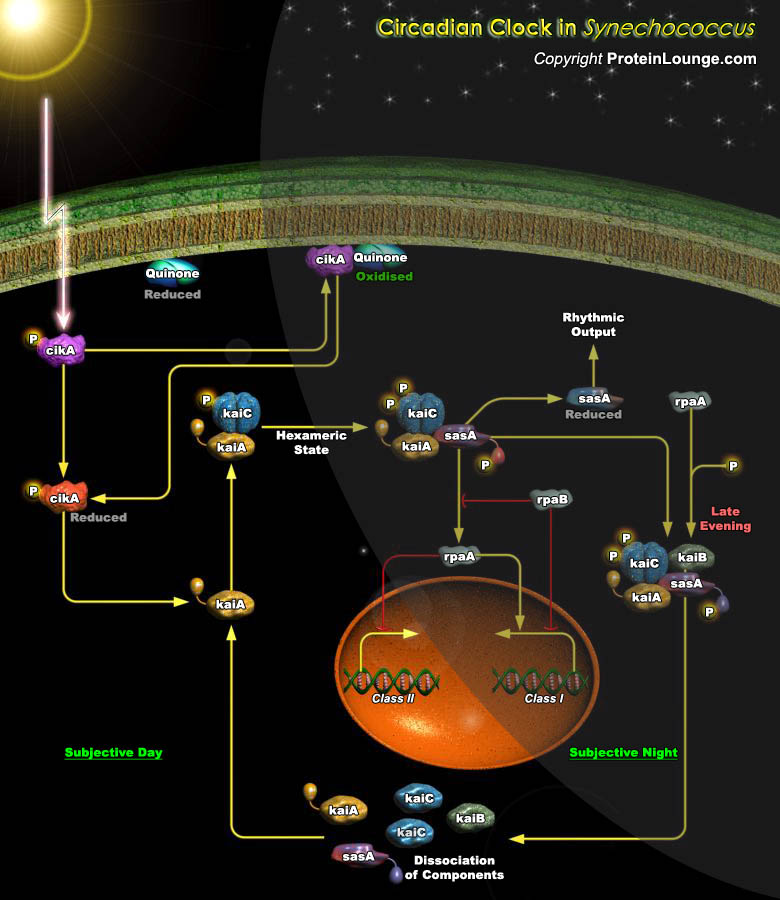
The unicellular cyanobacterium Synechococcus elongatus is an obligate photoautotroph and the simplest model organism in circadian biology. Circadian rhythms, regulated by a 24-h biological clock, enable the coordination of biological activity over the course of the day and facilitate adaptation to daily environmental changes in diverse organisms. Unlike the circadian oscillators found in eukaryotic systems, which employ a transcription–translation feedback loop(TTFL), the cyanobacterial core oscillator functions posttranslationally The S. elongatus core oscillator is a posttranslational oscillator (PTO), encoded by transcription factors kaiA, kaiB, and kaiC which regulate the global patterns of gene expression, the timing of cell division and compaction[..]
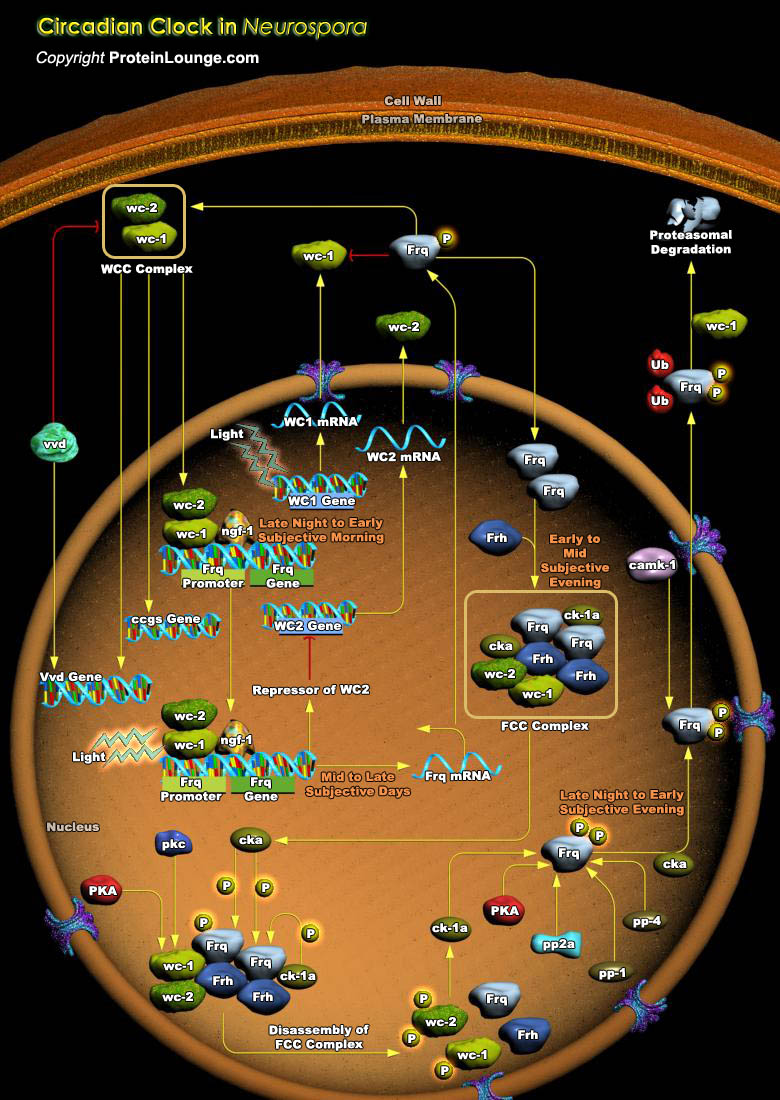
Circadian clocks are internal timekeepers that utilize environmental signals to induce cellular events to occur at the most favourable time of day. Circadian clocks in animals, plants, fungi and bacteria have similar characteristic properties and molecular architecture. They have a periodicity of approximately 24 hours, persist in constant conditions and can be reset by environmental time cues such as light and temperature. Although the length of the circadian period is temperature compensated, temperature shifts reset the phase of the oscillator. (Ref.1). Neurospora crassa (N. crassa) a filamentous fungus classified under the Phylum Ascomycota is commonly found in its vegetative state growing as a mycelium of haploid hyphae. The tubular hyphae forms incomplete[..]

